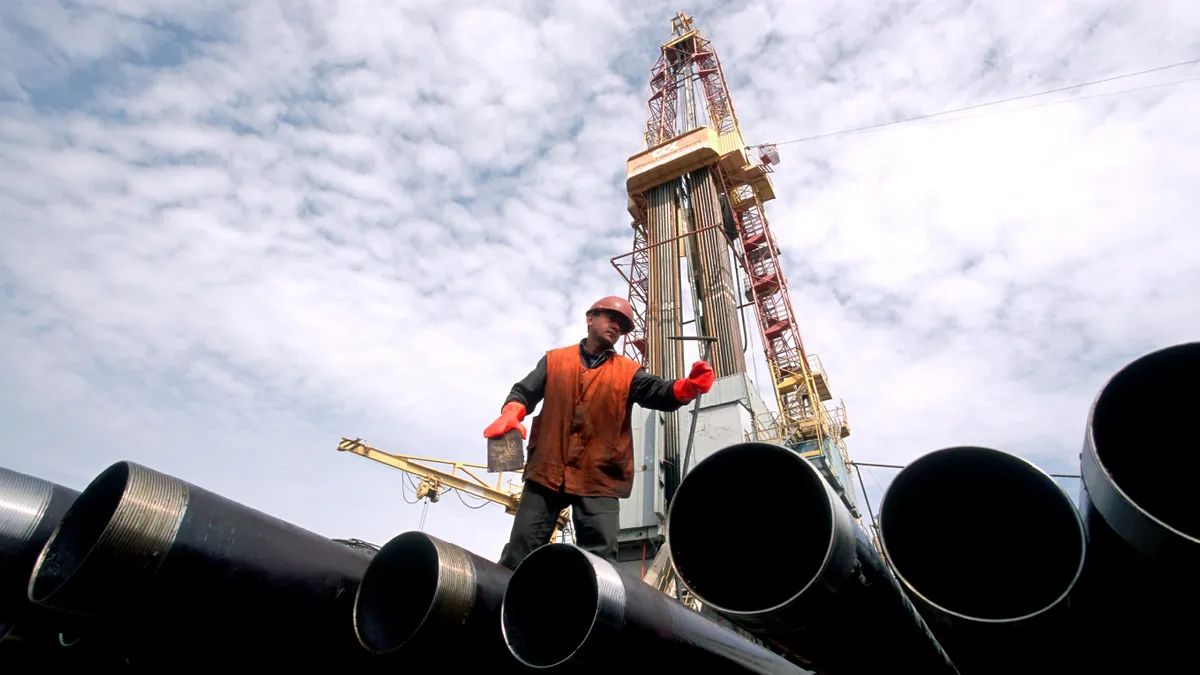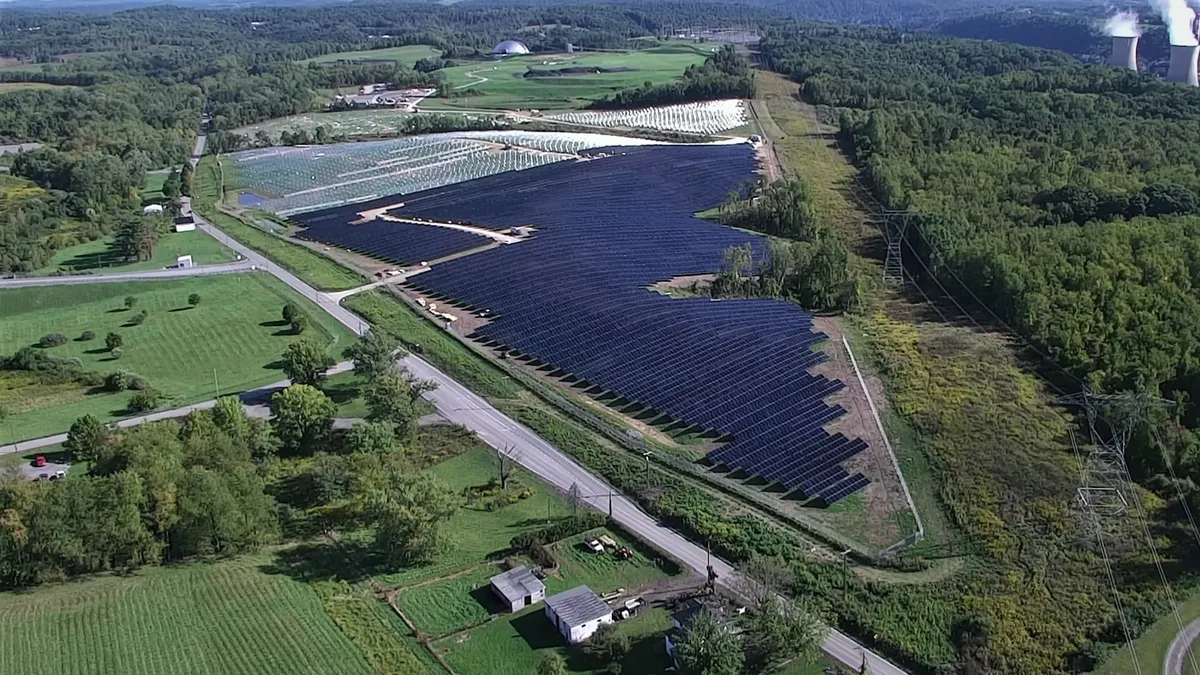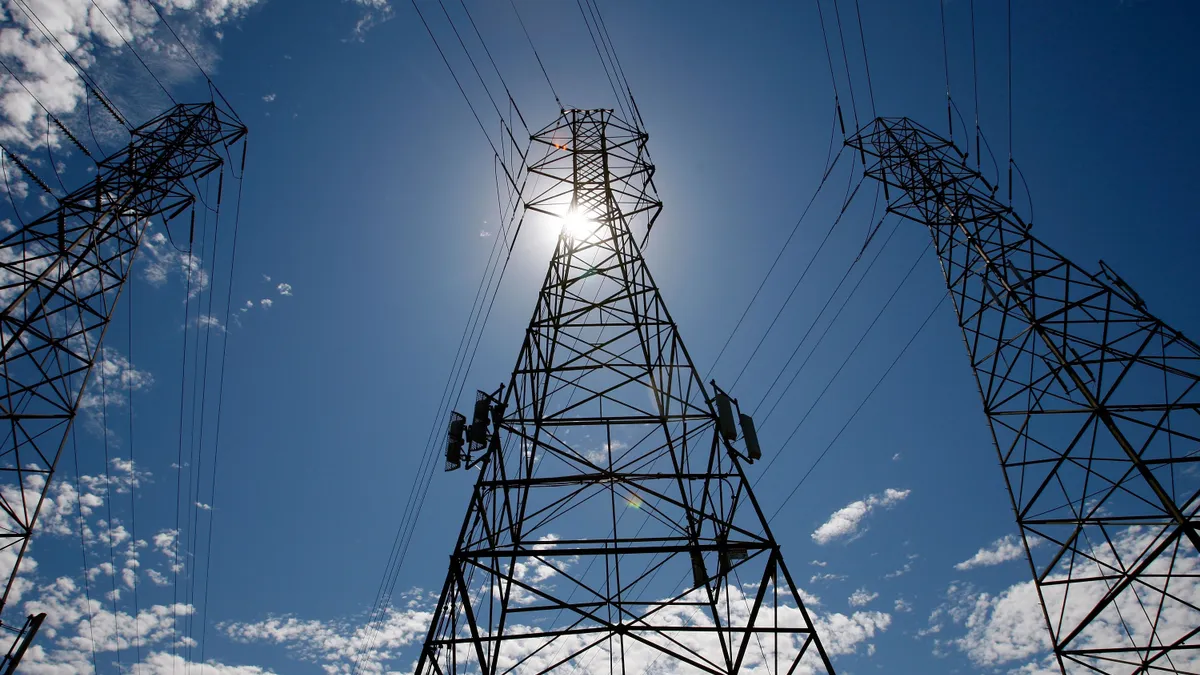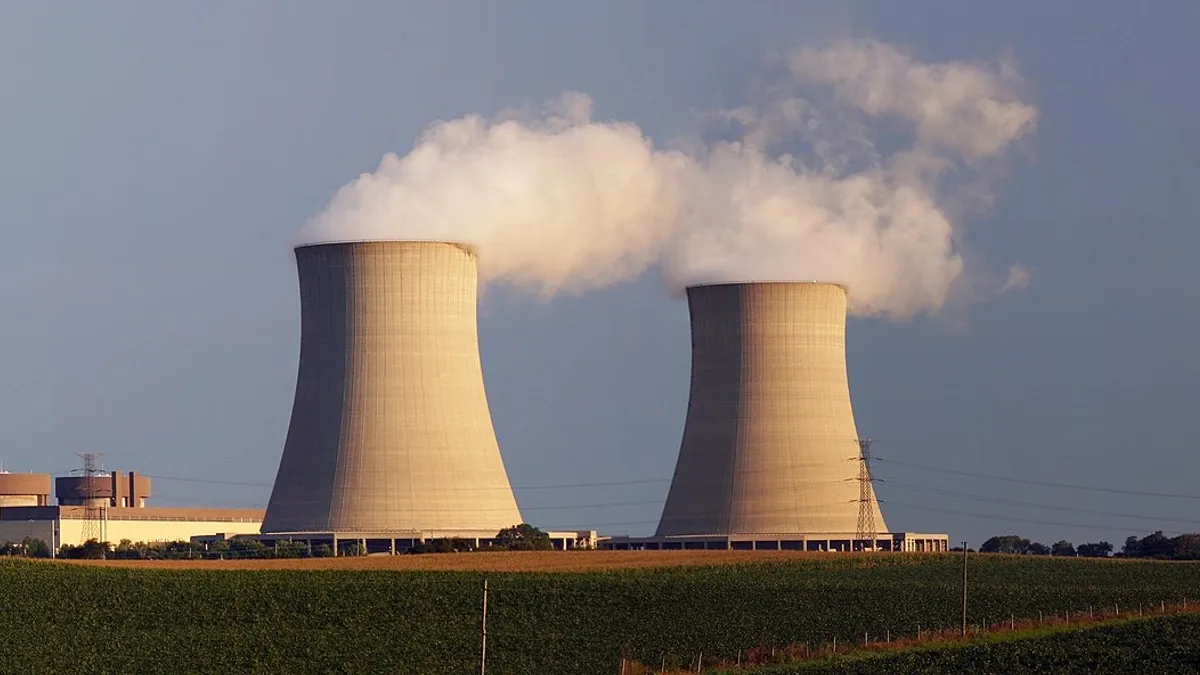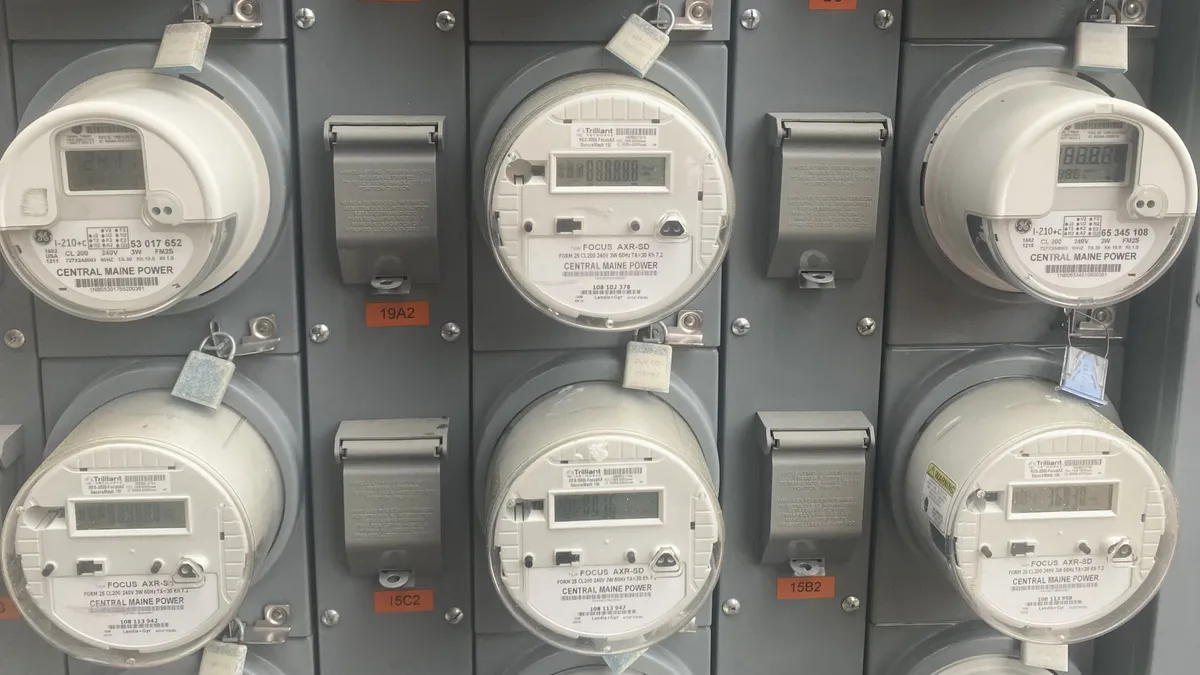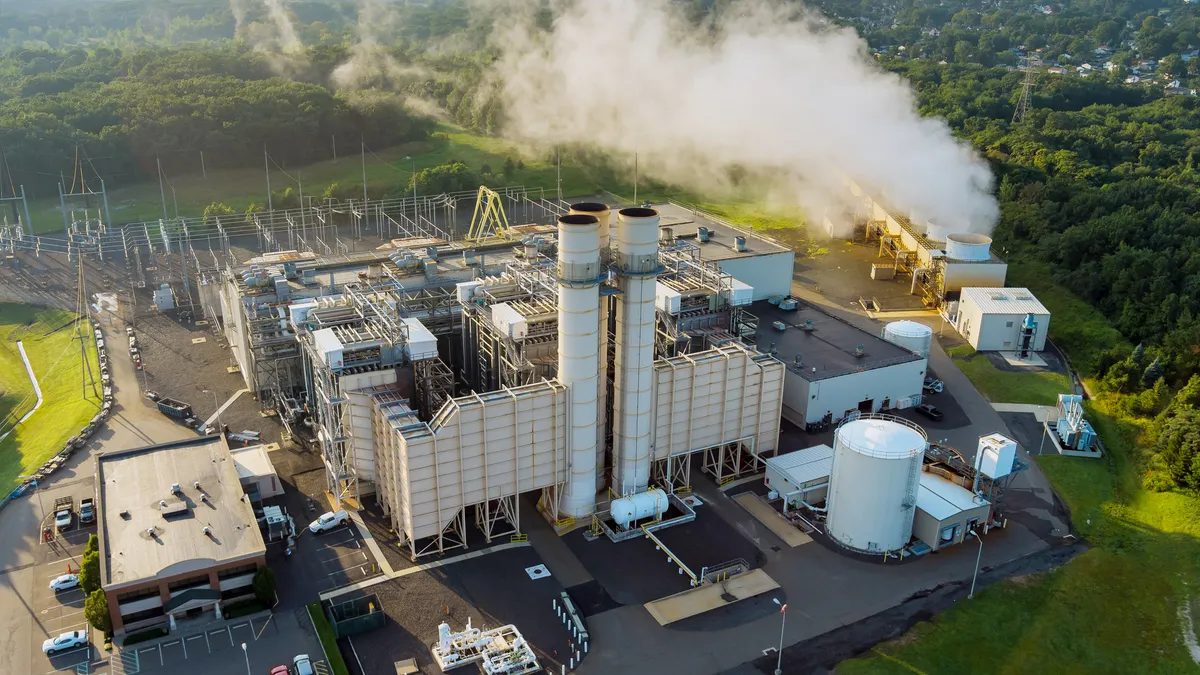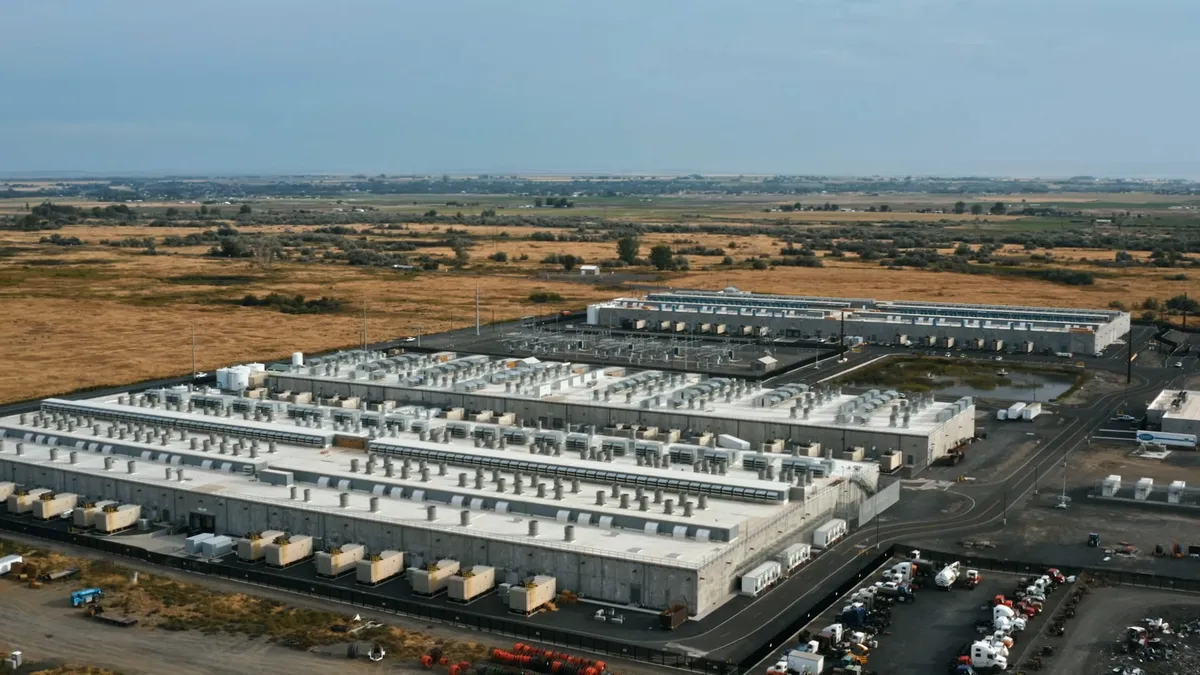The following is the third installment of Utility Dive's Power & Gas Index, a recurring series that chronicles the interdependence of power and gas markets across the United States. For a complete collection of regional charts and links to previous features, visit the P&G Index home page.
We're nearing the end of the "shoulder season," that time of year when energy prices moderate and gas storage facilities start injecting for next winter.
Now is the time when you'd like to be buying in the Northwest, where gas has largely been below $2.80/MMBtu and power prices even dipped into negative territory in late March. The region gets much of its power from hydroelectric resources, and a Bonneville Power Administration Seasonsal Surplus Sales analysis shows that the region is flush, helping lower both power and gas prices.
But despite moderate Spring prices, many believe that natural gas prices are poised to rise. Summer is highest for electricity demand, when air conditioners start humming — and the United States is no longer in an gas over-supply situation, due in part to the decline of conventional gas production.
“Conventional gas has been declining steadily since about 2008 and shale gas has been ramping up," said Art Berman, a petroleum geologist and shale gas expert. But there are signs that shale's ability to make up that difference will have limitations. "In the last year and a half, shale gas' growth rate has declined quite a bit," he said. "It's still growing, but only at about 2% year-over-year, compared to 7% a year and a half ago."
The American Gas Association last month published a "Preliminary Findings Concerning 2016 Natural Gas Reserves," concluding that despite falling prices, producers' gas reserves remained constant from 2015 to 2016, at about 308 trillion cubic feet (Tcf).
Reserves peaked in 2014, at 369 Tcf, but then slid back due to low prices (more gas can be economically produced at higher prices). But they've been largely stable in the last year, which AGA said "in-and-of-itself is unusual and likely reinforces the notion that producers in 2016 survived, in many cases, by tenaciously reducing costs."
"Supply outpaced demand for much of the 2014-2016 period such that the general direction of price movements was a two-year slide, even with record volumes of natural gas to power generation," according to AGA's report.
Natural gas took over as the dominant power generation fuel in 2016, but coal has seen a resurgence in recent months. According to the EIA, February gas prices at Henry Hub and New York City were "below the price of Central Appalachian coal on a $/MWh basis for the first time since November 2016."
And in the first quarter of the year, Henry Hub gas prices averaged $3.01/MMBtu — compared with $2/MMBtu last year. That led to a rise in coal's share of generation, from 29% to 31%, over the same period.
Gas is expected to be the primary generation fuel this summer, again surpassing coal. However, EIA notes that at the national level shares of both natural gas and coal are "expected to be lower than last summer, as output from hydroelectric and other renewable generators is expected to increase."
Despite the recent bump in coal demand, and a President who has vowed to revive the industry, few analysts predict long-term growth for coal. Stacy Nemeroff, a power and utilities analyst for Bloomberg Intelligence, was blunt in her assessment: "There is so much negatively impacting coal generators right now, including intermittent resources and nuclear subsidies that I don't think there is much that can help coal plants right," she said.
EIA expects production, prices to rise
The U.S. Energy Information Administration is predicting a jump in both natural gas prices and production this year and next. Henry Hub gas is expected to rise from $2.60/Mcf last year to $3.57/Mcf in 2018 — about a 37% increase.
At the same time, EIA predicts dry natural gas production to average 73.1 billion cubic feet per day (Bcf/d) in 2017, up 0.8 Bcf/d from the 2016 level. But the agency expects a larger increase next year, as gas production in 2018 is forecast to be 4 Bcf/d above the 2017 level.
Low gas prices and an influx of renewables have been pressuring generators across the nation, and particularly in Texas, where the state's energy-only market makes plants especially vulnerable to prolonged periods of low energy prices.
Some relief may be on the way. Gas prices in Texas were trading around $3 in April, with power prices roughly tracking throughout the year — and now prices are predicted to rise 10% to 15% in the next year. EIA predicts Henry Hub spot prices will rise from an average of $3.10/MMBtu in 2017 to $3.45/MMBtu in 2018, in part due to new liquefied natural gas exports out of the region, which are expected to grow considerably.
By 2020, total U.S. LNG export capacity will reach 8.6 Bcf/d, according to a study commissioned by the Natural Gas Supply Association and completed by Energy Ventures Analysis. After that, export capacity could reach 15.5 Bcf/d by 2030.
According to Berman, new pipelines being developed appear to primarily export natural gas. Permian and Eagleford shale gas is heading to Mexico, he said, and will be exported as LNG as well. Gas prices could end the year in the $3.50-$4/MMBtu range, he said.
“I think natural gas prices are going to remain relatively near-current levels—which is considerably higher than they have been for a long time," said Berman. "Natural gas prices have just about doubled in the last year.”
Total gas consumption is expected to rise from 73.34 Bcf/d this year, to 76.06 Bcf/d — and the biggest contributor is expected to be the electric power sector: The electric power sector will go from consumption of 25.24 Bcfd to 26.07 Bcf/d. (Though, that would still put 2018 gas consumption below 2015).
But EIA also expects natural gas' share of U.S. utility-scale electricity generation will fall from an average of 34% in 2016 to 32% in both 2017 and 2018, largely due to higher prices. Which is where coal steps in — the agency believes coal's generation share will tick up marginally, from 30% in 2016 to 31% this year and next.
“It sure looks to me that the tide has turned, at least for the time being, in favor of coal," said Berman.
Non-hydro renewables will rise from 9% this year to almost 10% next year, according to EIA's projections.
The rise in gas prices may give a boost to coal generators, but the long-term future of coal is limited. “If gas prices stay low, it's game-over for coal," said Peter Marsters, a research analyst with the Rhodium Group.
Even with higher gas prices, that increasing renewable share could be a problem for coal, said Marsters. "Gas prices, if they were to go up, you could see a situation where renewables start to even out-compete coal, depending on where you are," he said.
Marsters recently helped author research analyzing coal's long-term future in the United States.
"A lot of our analysis hinges on what happens with gas prices — and the future fuel mix in general hinges on that very issue," he said. "There are temporary spikes in natural gas prices and then there's the long-term outlook … the infrastructure and investment going in now is just not going into coal."
But fuel still produces almost a third of the country's electricity, and will maintain a significant role for years to come.
"Coal isn't going away any time soon," said Berman. "But we're going to see a general decline in coal use, relative to natural gas."



